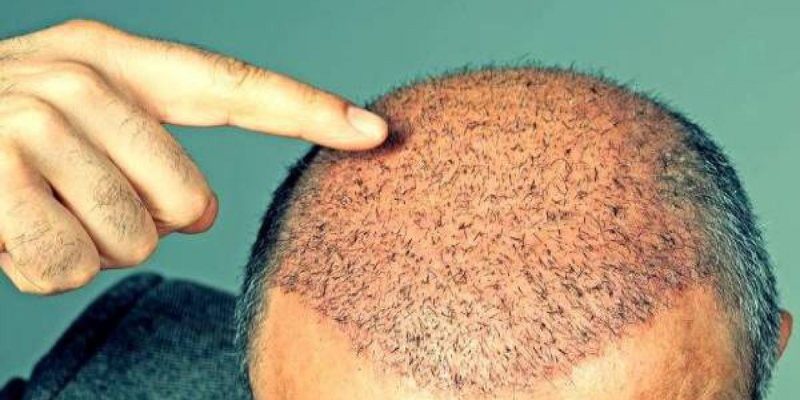How Long After Hair Transplant Donor Area Swelling Is Gone?
How long after hair transplant donor area swelling is gone? The hair transplant surgery could be a happy and life-changing event for the person who gets it. It could give them confidence and pride after years of being unhappy with being bald. Even though the process only takes a few hours, it can take a few weeks to feel better.
One problem with treatment is that it can cause swelling and redness, which makes patients wonder if they should keep getting it. In reality, you don’t need to worry about the swelling because it will go away quickly. Most of the swelling that happens after a hair transplant will go away in about a week.
Along with giving many young people a full head of hair, the surgery can have some unpleasant side effects. Patients should take care of themselves to make sure they heal faster, get their hair back faster, and have fewer problems. Before hair transplant surgery, you have to do things to make sure you don’t get any side effects.
How Long After Hair Transplant Donor Area Swelling Is Gone On Average?
Even though hair transplant surgery is often painless because local anesthetics are used and the body heals quickly, you may experience some unpleasant but temporary side effects. For example, the scalp may feel numb and uncomfortable a few days to a few weeks after surgery.
The skin on the scalp and around the face can get bigger in different ways in different people. A few days after surgery, the patient may start to swell, and it can last for up to three weeks before the swelling goes away. After the surgery, some parts of the scalp may be discolored for two weeks, but this will go away on its own. When a scar heals, itching is common and can last for several days.
No matter how experienced the surgeon is, surgery always has some risk.
What Causes Swelling After Hair Transplant?
Between the second and fifth day after a hair transplant, swelling of the forehead and eyelids and other symptoms are common. It can sometimes be very painful, to the point where the eyelids close and the person has trouble opening their eyes. As the eye swells, it can leave bruises (called ecchymosis) on the eyelids for a short time. After a hair transplant, it is normal and expected for the area to swell.
During the transplantation process, especially with the FUE method, surgeons open tiny channels to put hair follicles in the area that is going bald. The hair follicles are then put in these holes one by one. Isotonic fluid (saline fluid), also called physiological saline, must be injected under the skin so that the hair follicles can be put in easily and correctly.
Where liquid gets in, the area gets bigger and a little bit softer. This makes it easier for hair follicles to settle. So, the area where hair transplants can be done needs to grow. The hair follicles quickly settle into the channels that were open before. Also, ducts and getting pricked by a needle in the scalp are not serious injuries. Edema, which happens after a trauma, is also a way for the body to protect itself. Because of gravity, this isotonic fluid starts to move toward the forehead area about two to three days after hair transplantation.
Swelling After Hair Transpalnt Day By Day
Most of the time, the swelling goes down on its own after about a week. These fluids go into the bloodstream and come out of the body through the kidneys as urine. Also, local anesthetic fluids that aren’t saline and are used to numb the transplant site can make edema worse. As you can see, swelling is common after getting a hair transplant. On the other hand, the doctor or clinical staff who will do the hair transplant procedure must describe the problem correctly. Because a person who has had a hair transplant might think that the swelling is strange.
Depending on how bad the case is, swelling after a hair transplant can be put into one of three categories:
- There is no edema at this stage.
- The swelling is only in the top half of the forehead. It has a small benefit.
- Swelling and edema in the top and bottom of the forehead. In rare cases, you may need to see a doctor.
- At the third stage, there is swelling around the eyes. It moves a bit more slowly.
- Bumps on the top and bottom eyelids. The bumps might not go away for up to ten days.
How To Lessen Swelling After Hair Transplant?
There are several ways to get rid of swelling. When the head is in the right position while sleeping, the swelling goes down. Doctors say that you should sleep in a semi-sitting position with your head up. The average head angle should be 45 degrees. Using two pillows and sleeping with your head up can solve this problem. You shouldn’t lay on your stomach. Pressing the planted roots against the pillow makes the swelling worse after a hair transplant and makes it more likely that the roots will move out of place or get hurt. Other than that, there isn’t a big risk of edema after a hair transplant. You should follow the advice about what to eat and how long to rest after planting that has been given to you.
Since salty foods cause fluid retention, they can make swelling worse. Before the surgery, it will help if you eat less salt in your meals. Make sure you don’t mess up your sleep schedule. We don’t think it’s important to stop painkillers like aspirin from causing edema. People used to think that aspirin, which makes capillary blood flow and permeability better, was better for feeding hair follicles (capillary circulation and permeability).
Get plenty of water. Be sure to drink a lot of water. Since circulation will get better, fluid from edema in the forehead and face will leave the body faster through the urinary tract.
How Much is Hair Transplantation Successful in General?
Is hair transplantation successful in creating natural-looking hair? Hair transplantation is a surgical procedure that restores hair to areas where it has been lost, such as the head or chest. It is a successful way to restore lost hair. However, the success of hair restoration surgery depends on many factors, including age, race, and health condition. Most people who undergo the procedure are happy with the results. People typically report good-looking and long-lasting results following a hair transplant. Potential risks include infection, hair loss, and scarring. patients can experience temporary discomfort after the surgery, as well as a loss of hair on the donor area for a period of time. In most cases, however, these problems can be resolved by following post-operative instructions carefully. Additionally, many hair restoration treatments carry their own set of potential side effects; so it is important to discuss any concerns you have before undergoing any treatment. If you are still wondering whether is hair transplantation successful- you can consult our Hair transplant Istanbul clinic and consult with a skilled surgeon to discuss the risks and benefits of the procedure.






